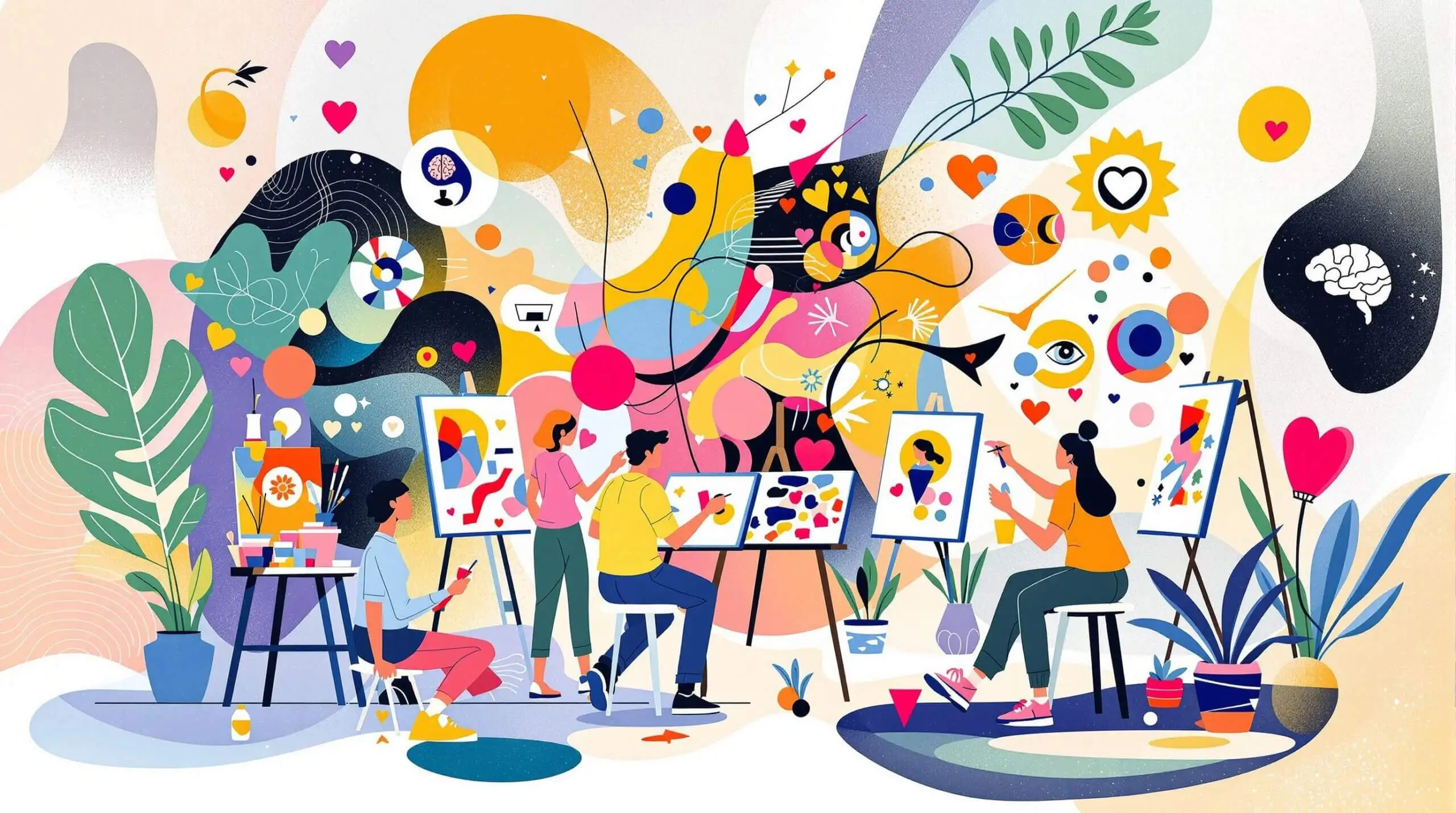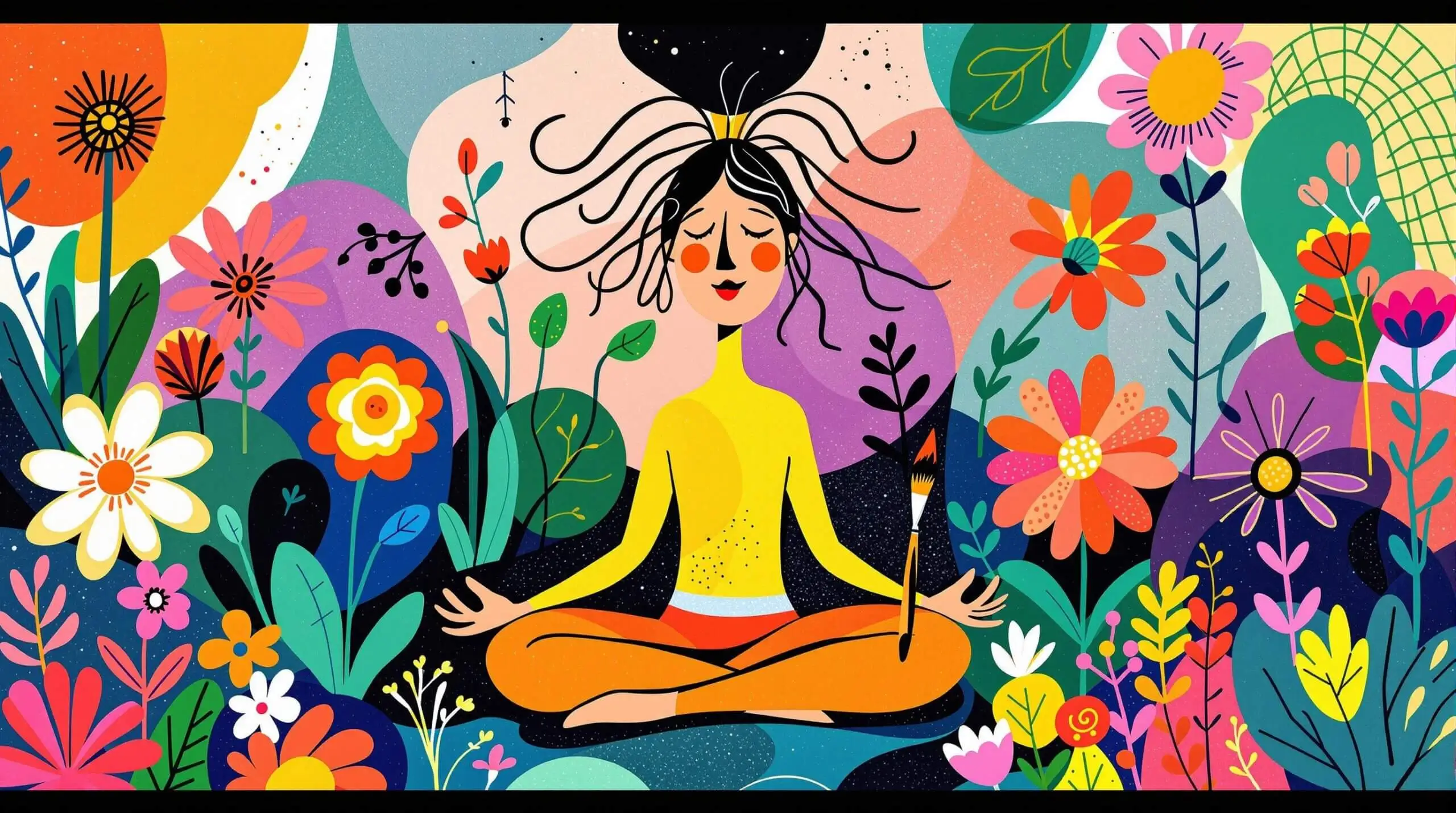Longevity’s Canvas: Art’s Subtle Health Benefits
Explore how engaging with art can subtly enhance longevity and promote overall health.

Understanding Art’s Impact on Health and Longevity
The Science Behind Art and Well-being
Looking at art reduces stress hormones. That’s not just a pleasant theory – it’s backed by hard science. Studies show that spending time with artwork decreases cortisol levels by up to 32%. This stress reduction directly impacts our biological aging process, potentially adding years to our lives.
Historical Context and Modern Research
Ancient civilizations understood art’s healing properties intuitively. The Greeks built beautiful hospitals overlooking the sea, believing that beauty aided recovery. Modern science now proves they were right. Research from University College London found that people who regularly visit art galleries have a 14% lower risk of early mortality compared to non-visitors.
Neural Benefits of Art Appreciation
Our brains light up like Christmas trees when we look at art. MRI studies reveal increased activity in areas associated with pleasure, emotional regulation, and memory formation. This neural stimulation helps maintain cognitive function as we age, potentially reducing the risk of dementia by up to 11%.
Challenges in Measuring Art’s Health Impact
Quantifying art’s health benefits presents unique challenges. Unlike exercise or diet, art’s effects are subtle and often deeply personal. However, recent studies using biomarkers and long-term health outcomes have started to paint a clearer picture of art’s tangible benefits for longevity.

The Physical and Mental Health Benefits of Art
Cardiovascular Health and Art
Creating or viewing art lowers blood pressure. A 2018 study found that 45 minutes of artistic activity reduced blood pressure by an average of 7 points. Lower blood pressure means less strain on your heart and blood vessels, potentially extending life expectancy by 3-5 years.
Immune System Enhancement
Art engagement boosts immune function. Research shows increased production of infection-fighting cells after creative activities. Even passive art appreciation at museums improved immune markers in study participants, with effects lasting up to 48 hours after visits.
Mental Health and Cognitive Function
Art therapy reduces depression symptoms by 71% in some studies. This matters for longevity because depression accelerates cellular aging. Regular artistic engagement keeps the brain plastic and adaptable, creating new neural pathways well into old age.
Different Forms of Artistic Engagement and Their Benefits
Active Art Creation
Making art, whether painting, sculpting, or drawing, provides unique health benefits. The physical act of creation improves fine motor skills and hand-eye coordination. Studies show that older adults who regularly create art maintain better manual dexterity and cognitive function.
Passive Art Appreciation
Simply looking at art carries significant benefits. Museum visits increase brain connectivity patterns similar to meditation. Regular gallery visitors show improved memory retention and slower cognitive decline compared to non-visitors.
Digital Art Engagement
Virtual gallery tours and digital art platforms offer accessibility advantages. While not quite as effective as in-person experiences, online art viewing still produces measurable stress reduction and mood improvement.
Practical Applications of Art for Health
Integration into Daily Life
Small doses of art make big differences. Hanging artwork in your home or office reduces stress levels throughout the day. Even brief art breaks during work hours improve productivity and reduce mental fatigue.
Art in Healthcare Settings
Hospitals with art programs report faster patient recovery times. Post-surgical patients with artwork in their rooms require 22% less pain medication. These findings have revolutionized healthcare design, with art now considered essential rather than decorative.
Specific Benefits by Art Type
- Abstract art improves problem-solving abilities
- Nature scenes reduce anxiety by 60%
- Colorful art boosts mood and energy levels
- Portrait art enhances empathy and emotional intelligence
- Geometric patterns improve focus and concentration
- Classical paintings reduce stress more effectively than modern art
- Interactive installations boost physical activity levels
- Digital art improves technology adaptation in older adults
Implementing Art for Longevity Benefits
- Visit museums monthly for optimal cognitive benefits
- Create art for 30 minutes daily to reduce stress
- Join art appreciation groups for social connection
- Display calming artwork in bedrooms for better sleep
- Rotate artwork seasonally to maintain neural engagement
- Combine art viewing with gentle exercise
- Practice mindful art observation for enhanced benefits
Research and Evidence
Clinical Studies and Outcomes
Research from the World Health Organization confirms art’s positive impact on both physical and mental health. A comprehensive 10-year study tracked 5,000 participants, finding that regular art engagement increased life expectancy by up to 2 years.
Biological Markers
Scientific measurements show concrete physical changes from art exposure. Blood tests reveal decreased inflammation markers, improved immune response, and better hormonal balance after artistic activities. These biological improvements directly support longevity.
Population Studies
Communities with active arts programs show better health outcomes. Cities with high museum density report lower rates of stress-related illnesses and higher life satisfaction scores. These findings hold true across different cultures and socioeconomic groups.
Future Directions in Art and Longevity Research
Emerging Technologies
Virtual reality art experiences show promise for improving brain health. Preliminary studies indicate VR art therapy might be particularly effective for cognitive maintenance in older adults. New technologies enable researchers to measure art’s immediate effects on brain activity and bodily functions.
Personalized Art Therapy
Research moves toward individualized art prescriptions based on personal health needs. Different art styles and mediums might benefit specific conditions more effectively. This targeted approach could maximize art’s health benefits for each person.
Practical Tips for Arts Engagement
- Start with 10 minutes daily of art viewing or creation
- Choose art that personally resonates with you
- Vary your artistic experiences regularly
- Combine art appreciation with social activities
- Document your responses to different artworks
- Create a dedicated art space in your home
- Join online art communities for connection
- Attend local art events and exhibitions
- Consider taking art classes or workshops
- Use art as a stress-management tool
Art offers a powerful, accessible tool for enhancing health and extending life. The evidence shows clear benefits for both physical and mental well-being. Regular engagement with art – whether creating or appreciating it – provides measurable improvements in stress levels, cognitive function, and overall health outcomes. By incorporating art into daily life, people can tap into these benefits and potentially add both years to their lives and life to their years.